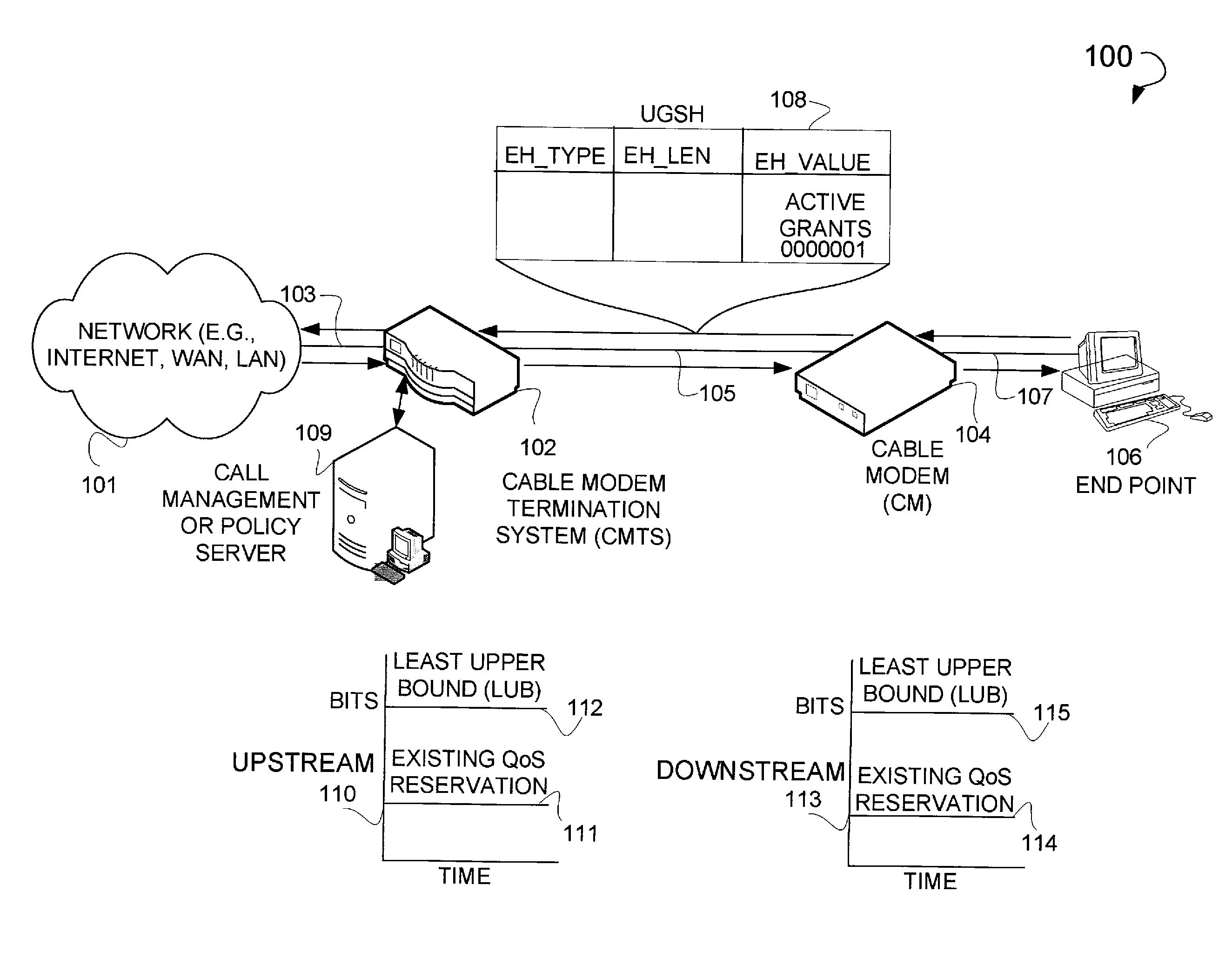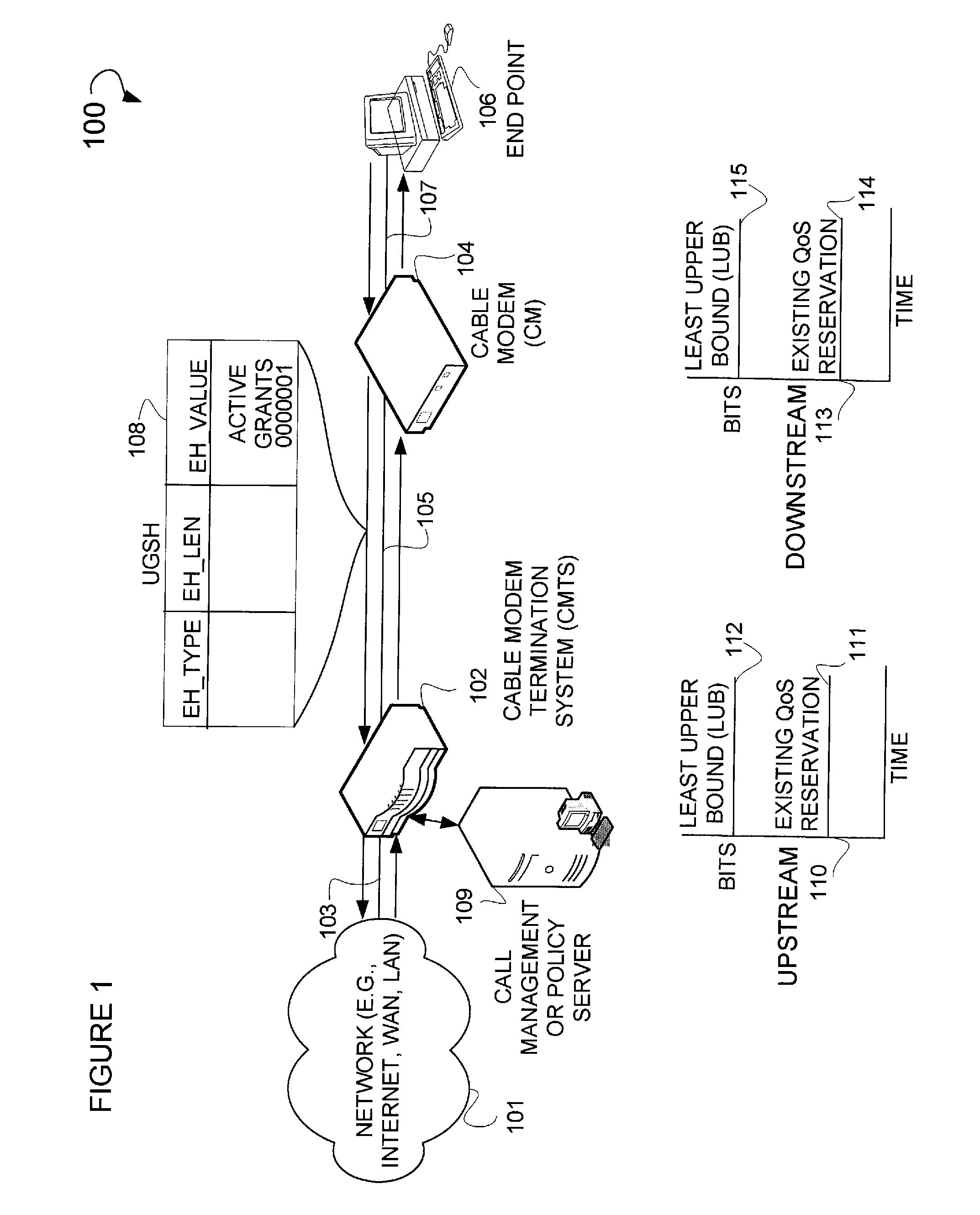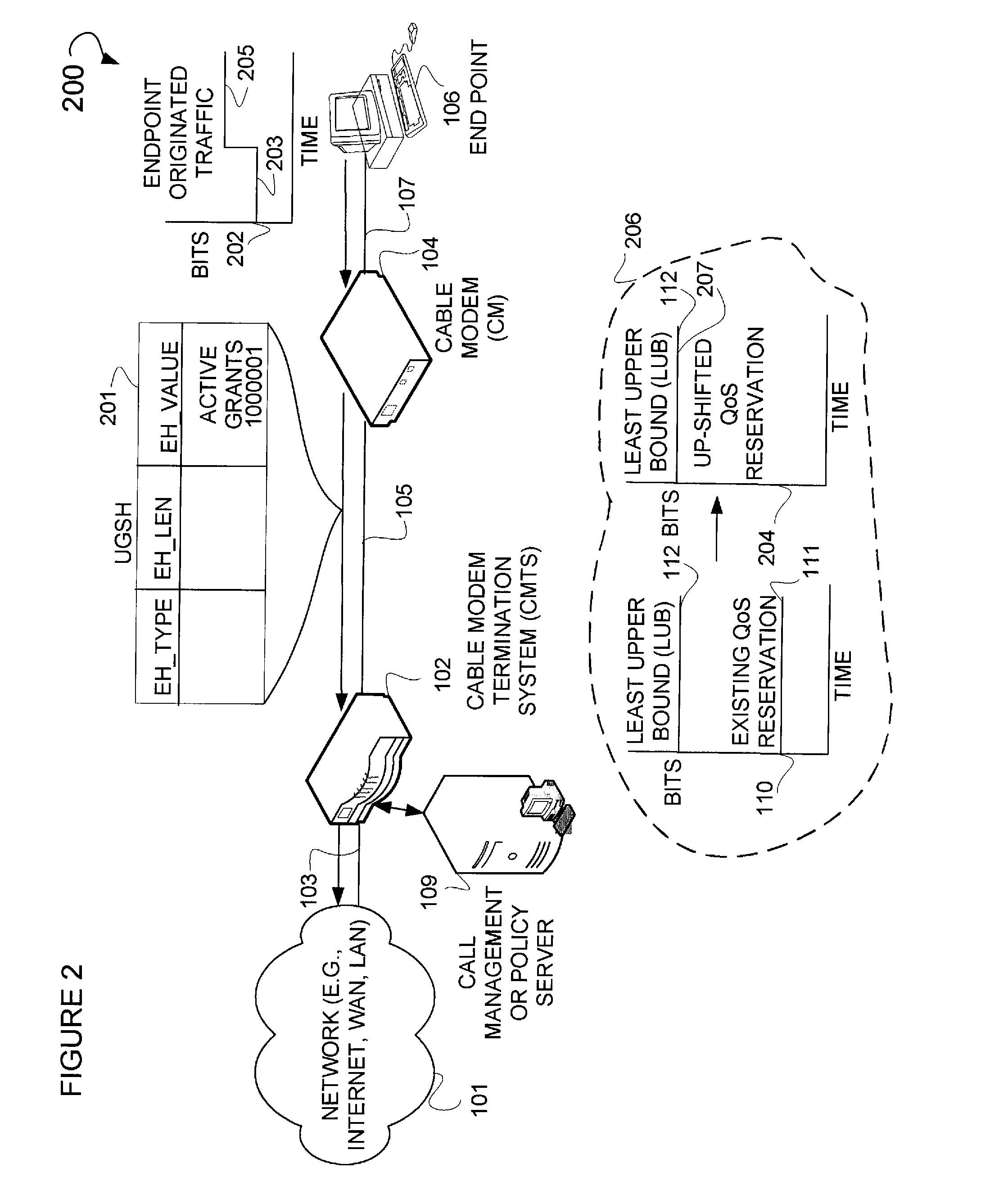Network discovery and dynamic adaptation of insufficient QOS resources
a network and resource technology, applied in the field of network quality of service (qos) adjustment, can solve the problems of not being able to rely on, for example, an application function to update the network, and resources may not be available later if needed, and not allowing for a subsequent automatic reduction of resource reservation
- Summary
- Abstract
- Description
- Claims
- Application Information
AI Technical Summary
Benefits of technology
Problems solved by technology
Method used
Image
Examples
example case
eservation Downgrade
[0048]FIG. 9 is an example system diagram 900 illustrating the decrease of bandwidth traffic resulting in a corresponding downshifting of the existing QoS reservation. Illustrated in this figure is a DSC-REQ message 901 with a service flow parameter header field 902 that contains the parameters relating to the downshifting of a reserved rate 904 to a reserved rate 905 (the reserved rate 905 may equal the current endpoint originated traffic rate). The downshifting should only occur when the observed traffic has consistently used less than the currently reserved bandwidth over some period of time and the network administrators policy furthermore allows for downshifting of resource reservations. This packet may be sent from, for example, a CMTS 102 to a CM 104. Graph 903 depicts this downshifting where an existing QoS reserved rate 905 is downshifted to be equal to the endpoint originated traffic rate. Collectively graph 903 and the graph 110, illustrating the pre-e...
example implementation
[0067]FIG. 14 is a flow chart describing an example method 1400 to change a QoS reservation based upon an increase in a media flow. Illustrated is a start 1401. This start 1401 may be, for example, in the form of an external stimulus to an end point. In some cases, a module 1402 is executed wherein a media flow is authorized for a LUB. Next, network resources maybe reserved for an amount less than the LUB, as described by module 1403. This reservation may be made by a network administrator via a device such as a call management or policy server (e.g., 109, 404). In some cases, a module 1404 may detect a flow (e.g., a media flow) that exceeds the reserved resource due to, for example, an increase in data packet size and / or data packet frequency. In some case, a module 1405 may be executed that increases the reservation to an authorized LUB. Module 1406 denotes the end of this method.
[0068]FIG. 15 is a flow chart describing an example method 1500 to change a QoS reservation. In some e...
PUM
 Login to View More
Login to View More Abstract
Description
Claims
Application Information
 Login to View More
Login to View More - R&D
- Intellectual Property
- Life Sciences
- Materials
- Tech Scout
- Unparalleled Data Quality
- Higher Quality Content
- 60% Fewer Hallucinations
Browse by: Latest US Patents, China's latest patents, Technical Efficacy Thesaurus, Application Domain, Technology Topic, Popular Technical Reports.
© 2025 PatSnap. All rights reserved.Legal|Privacy policy|Modern Slavery Act Transparency Statement|Sitemap|About US| Contact US: help@patsnap.com



